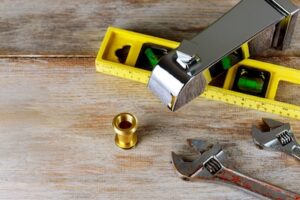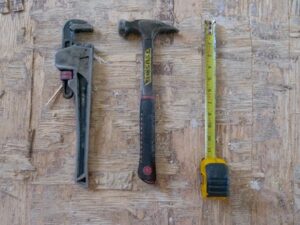13 Plumbing Upgrades to Prioritize In an Old House
If you live on an older property, stay on top of regular maintenance to avoid expensive repairs down the line. This is especially true for your plumbing system, which can spring a leak or two if not adequately cared for. Older fixtures and systems can give you nasty surprises when you least expect it, so it’s always best to be proactive. Luckily, there are a few easy upgrades that will extend your pipes’ life. So, here is a list of 13 plumbing upgrades to prioritize in an old house:
- Replace Old Pipes
- Upgrade to a Tankless Water Heater
- Fix Leaks Immediately
- Insulate Pipes
- Install Low-Flow Fixtures
- Get a Water Pressure Regulator
- Replace Old Fixtures
- Install a Water Softener
- Replace the Toilets
- Seal the Toilet Bowl
- Add a Bathroom
- Install a Dishwasher
- Properly Maintain the Drains
So now that you have an idea of the upgrades to your plumbing that you should prioritize in an older home, let’s examine each one in detail.

1. Replace Old Pipes
Some older properties have galvanized steel, lead, or iron pipes. These materials are prone to corrosion and affect your water quality. Inspect the pipes in your basement or crawl space and get a professional opinion on whether to replace them.
However, a simple plumbing repair will suffice if they are in good condition. Keep checking for leaks, cracks, or any other type of damage. If you have to replace them, consider copper or PVC pipes. These are more durable and won’t leak harmful chemicals into your water.
2. Upgrade to a Tankless Water Heater
While tankless water heaters cost more upfront, they will save you money in the long run. They heat water on demand instead of storing it in a tank, conserving energy.
They also last longer, so you won’t have to replace your water heater often. Talk to a professional to find the best tankless water heater for your home. They will consider your family size and water needs before making a recommendation.
However, if you still want to keep a tank water heater, insulate it. This simple upgrade will help it run more efficiently and save money on energy bills. Other than this, replace it if too old or when it no longer meets your home demands. Go for a high-efficiency model to save even more money and energy.
3. Fix Leaks Immediately
It’s tempting to ignore a minor plumbing leak, but that can lead to expensive repairs down the line. The water pressure from a small leak causes pipes to break or crack, leading to more damage.
Fixing leaks as soon as you see them will save you time and money in the long run. Besides this, fix dripping faucets and shower fittings. A simple washer replacement can solve the problem quickly and cost very little.
Note that a single household can waste up to 10,000 gallons of water annually from dripping taps. It translates to colossal water and sewer bills, so it’s best to nip the problem in the bud.

4. Insulate Pipes
Adding pipe insulation is inexpensive, reduces heat loss, and lowers energy bills. It also prevents your pipes from freezing in the winter, which leads to significant damage. You can find pipe insulation at most hardware stores, and it’s easy to install. Just measure the length of your pipes and cut the insulation to size. Slip it over the pipes and secure it with tape or wire ties.
5. Install Low-Flow Fixtures
Water-saving fixtures are a must in any home, old or new. They conserve water and lower your monthly bills. As you will realize, most hardware stores stock low-flow toilets, showerheads, and faucet aerators. They are easy to install and don’t require any special tools.
You might need a professional to install a low-flow showerhead, but it’s a quick and easy job. It results in water conservation, a longer lifespan on your fixtures, and money saved on water bills.
6. Get a Water Pressure Regulator
If you live in an old house, your water pressure might be too high. It stresses your pipes, causing them to break or leak. A water pressure regulator protects your plumbing system, preventing costly repairs.
7. Replace Old Fixtures
Older fixtures often have lead, which can leach into your water and cause health problems. Replacing them with new fixtures made of copper or brass is a simple and effective way to improve your home’s plumbing system. You can do this project yourself, but turn off the water before you start. Replace fixtures such as faucets, showerheads, and water supply lines.
8. Install a Water Softener
If your water is hard, it’ll damage your plumbing system. It also causes soap scum build-up and makes it difficult to clean your clothes. A water softener removes the minerals that cause water hardness, and it’s a relatively easy installation.
You can do it yourself or hire a professional. Before carrying out the task, figure out the right size and whether you want a sodium chloride-based or potassium-based system. Get a system that’s certified for drinking water.
9. Replace the Toilets
Old toilets use more water to run, so replacing them with low-flush models will conserve water. New toilets are also more efficient and easier to clean. When shopping for a new toilet, check it’s the right size for your bathroom and that the flushing mechanism is adequate.
Other factors to consider include shape, style, and height. Some models have a slow-close feature to prevent slamming, and others have an automatic flushing mechanism. Choose a model that will save money and improve your bathroom’s look. If you want a modern feel, go for a sleek, one-piece toilet. Incorporate a bidet, and you’ll have a luxurious bathroom that conserves water.
10. Seal the Toilet Bowl
If your toilet bowl leaks, it wastes water and increases your water bill. The good news is that you can quickly fix the problem by sealing the bowl. Start by shutting off the water supply to the toilet. Flush the toilet and hold down the handle to empty the tank.
Next, remove any mineral deposits around the bowl with a brush. Finally, apply a bead of silicone sealant or plumber’s putty around the bowl. Replace the lid and turn on the water supply.
11. Add a Bathroom
Older homes usually don’t have enough bathrooms, a problem if you have a large family. Adding a bathroom is a significant project, but it will improve your quality of life. The project will require running water lines and drains, which a professional can do. You’ll also add electricity for lights and outlets.

12. Install a Dishwasher
Most older homes do not have a dishwasher. If you often entertain or have a large family, it’s worth installing one. Dishwashers save water and energy, and they free up your time.
When selecting a dishwasher, consider how much space you have. If you have a small kitchen, choose a model that is easy to install under your counter. Consider the finish type and whether you want a built-in or portable dishwasher. Besides, determine the noise level and whether you want a water filtration system.
13. Properly Maintain the Drains
Drain maintenance is a critical but often overlooked aspect of plumbing. Clogged or slow drains are annoying and lead to bigger problems. To prevent drain issues, clean them regularly with a drain snake or drain cleaner.
Pour a cup of baking soda down the drain, followed by a cup of vinegar. Let it sit for 30 minutes, then flush with hot water. This method is useful for preventing clogs but won’t adequately clear a clog already there.
Let a professional clean the main line from your house to the sewer annually. Doing this will keep your drains flowing freely and prevent clogs. They’ll also check for any leaks and repair them.
Seek Professional Advice
Upgrading your old home’s plumbing system is an excellent way to improve its function and efficiency. These upgrades will save you money, conserve water, and prolong the life of your pipes. Before starting any project, talk to a plumbing professional to ensure it’s done correctly. In the end, you’ll also increase the property value and promote a healthier environment.
